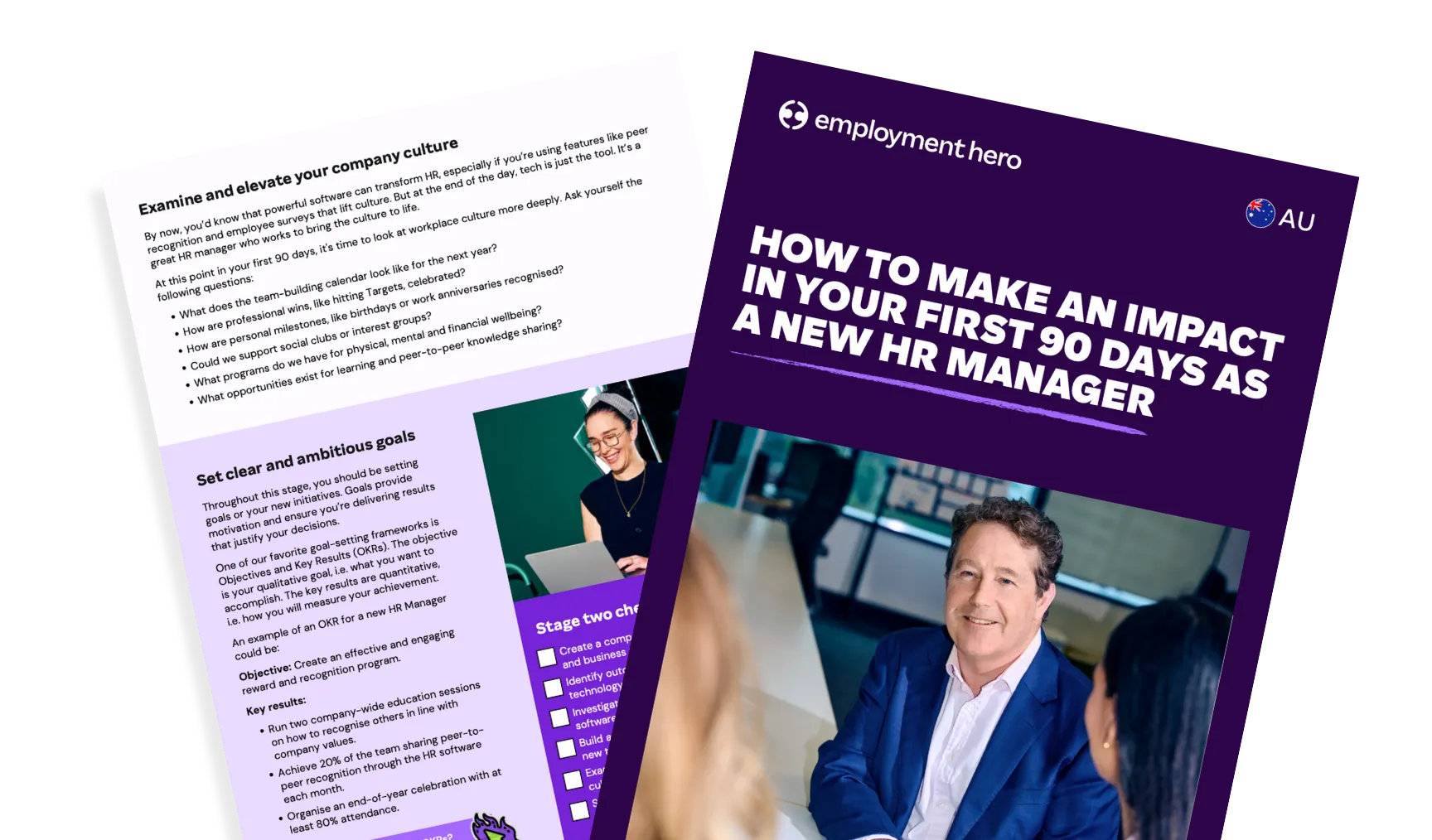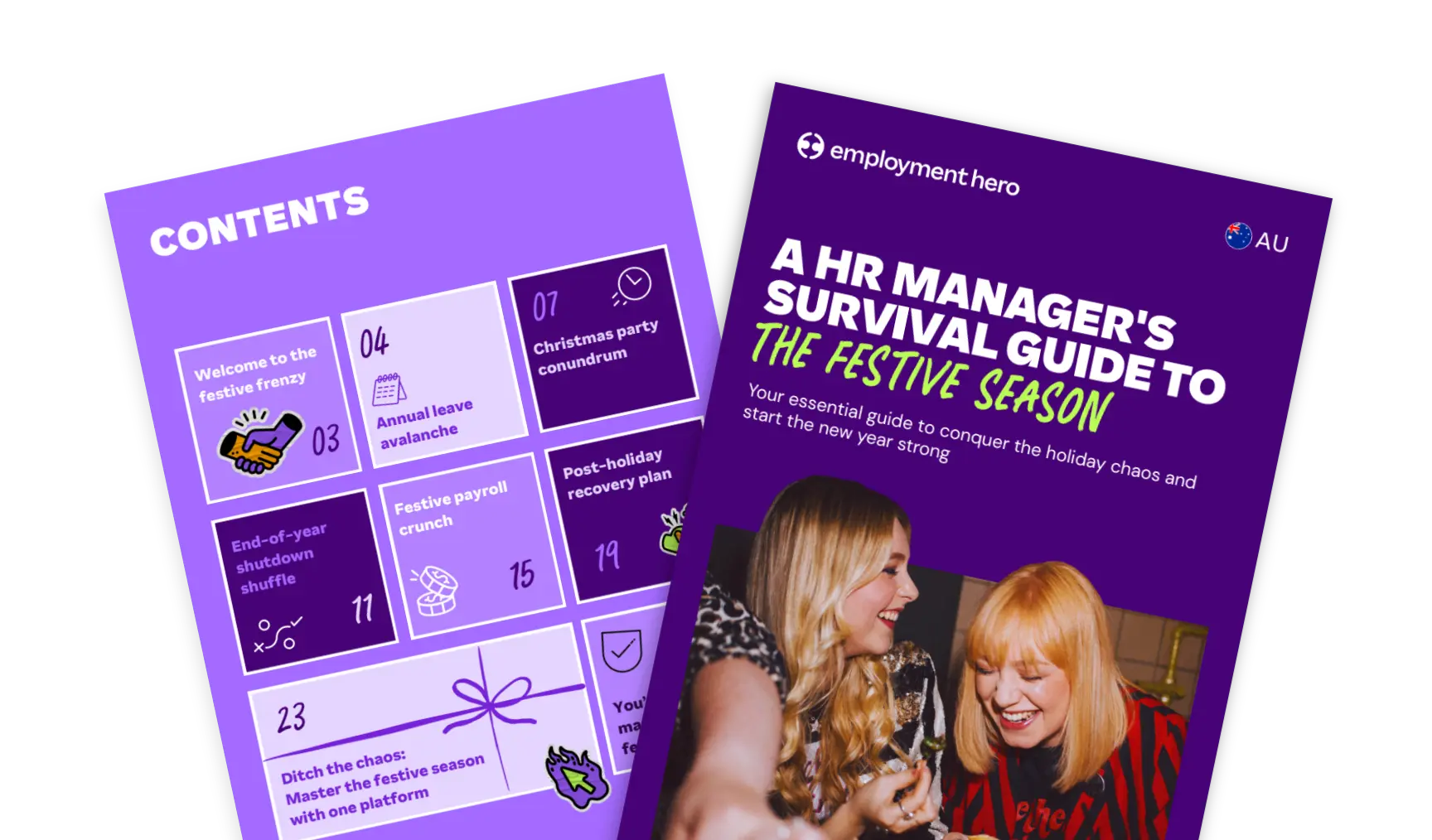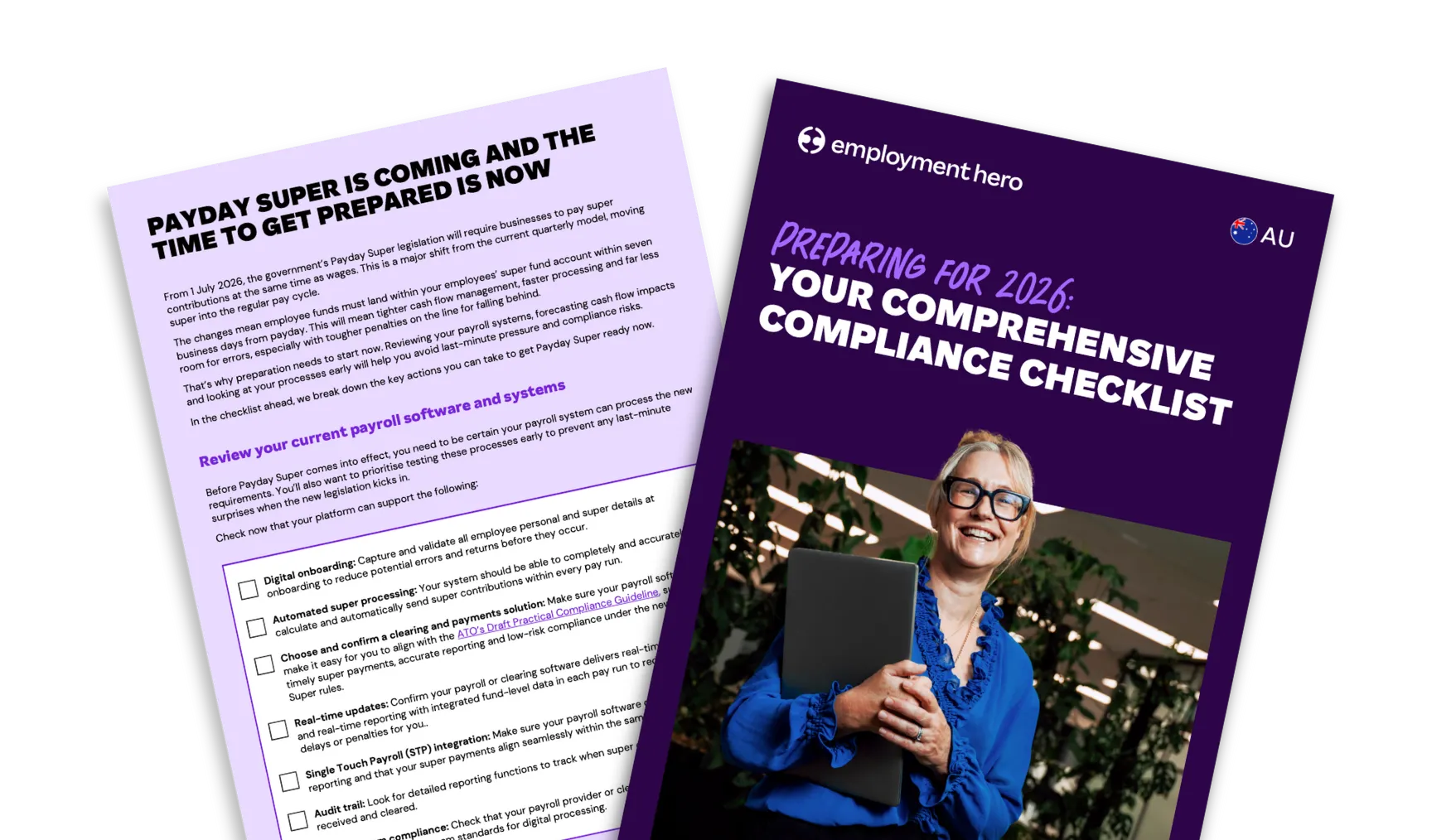Power of Automated Payroll Report [ANZ] | Employment Hero
Published
Power of Automated Payroll Report [ANZ] | Employment Hero
Have you ever thought about what processing payroll might look like in 5, 10, 20 years time?
It’s an interesting thought, and one that’s actually undergoing a huge change right now. Advancements in technology and artificial intelligence (AI) are altering the way software vendors are bringing payroll products to market. It’s changing end-user expectations and influencing how third parties, such as accountants and outsourced payroll providers, offer their services.
You’ve read and heard it all before – this technology is here to help us move into more advisory and strategic roles, but a lot of payroll providers aren’t there just yet. While many payroll providers have automated a portion of their payroll processes, more can be done to unlock new efficiencies and drive even greater growth.
However, the increasing automation of payroll processes raises critical questions about the future of the industry and the types of products that will be in demand. It also prompts us to consider who will be using payroll software in the future. How will AI and automation affect payroll, and the roles of those who incorporate payroll services into their offering? And what is the overall sentiment towards the use of automation tools for payroll services in Australia and New Zealand?
With this shift in the payroll industry currently happening, we’re diving into the various facets of automation within payroll management, exploring its potential to change traditional practices and transform the way payroll is processed.
To help our community understand these fundamental changes, we set out to explore the current landscape and sentiments of payroll providers. We surveyed more than 1000 payroll professionals across Australia and New Zealand in February 2024, and our findings revealed that there is a clear appetite for automation and AI in payroll. However, it emphasises the need to educate payroll professionals and businesses on the tools available to them, and how to maximise the application and potential benefits of these tools.
We hope the insights presented in this report serve as reassurance or guidance in helping you to streamline your payroll operations.
In this report, we cover;
- The current payroll landscape;
- Perceptions towards the use of AI and automation in payroll;
- Challenges and concerns for payroll professionals;
- Identifying best practices and the future outlook; and more.
Download the report now.
Other resources:
Key findings
of Australian pay runs take longer than a day
of Australian pay runs take up to 3 days to complete
of payroll professionals would like to cut down payroll processing times with AI and automation
of respondents believe AI and automation use will increase in their organisation over the next 12 months
Insights from Irene Bennetts – Admin Army CEO & Founder
We found that collecting company software requirements, chasing clients for payroll data and training on payroll systems are the most common challenges payroll providers face. Why do you think this is the case, and how are you tackling them at the moment?
“The biggest driver of these is the fact that multiple stakeholders are always involved, each with varying levels of urgency, availability, and understanding of payroll processes. Admin Army addresses these challenges by leveraging technology and clear communication strategies. For collecting software requirements, we use detailed questionnaires and structured interviews that guide clients through providing the necessary information efficiently. To manage client payroll data effectively, we implement regular reminders, set clear deadlines, and use cloud-based payroll systems like Employment Hero. This enables easier data collection and real-time access to information. For training, we offer customised sessions that cater to the specific needs of our clients, ensuring they are well-equipped to use the systems effectively. Additionally, our status as members of NZPPA allows us to stay ahead of legislation updates and training requirements, ensuring our team and clients are always well-informed and prepared.”
Insights from Lielette Calleja, Director – Business Depot
Our data found that a lot of payroll providers were using automation tools but still taking a long time delivering pay runs, why do you think that is, and how do you think that could be improved?
“To mitigate most of the frustrations around running payroll, organisations need to prioritise their investment in setting up automated and robust payroll systems correctly. They should partner with experts of the technology and someone who also understands their industry and award. Improving the workflow process from Management > HR > Payroll will remove any friction that results in bottlenecks and delays in payroll processing. Our payroll legislation in Australia, while complex, does not in my opinion solely contribute to the big payroll time wasters. I believe it has to do with inefficient workflow practices, organisations not leveraging the software and not investing in HR and payroll systems that will enable a better user experience for staff, management, and the payroll team.”
Insights from Employment Hero’s Implementations Experience Manager, Constance Mallon
Do you have any tips on how to optimise the payroll software implementation process?
“When getting ready for implementation, make sure you have dedicated resources and time allocated for the implementation process. This involves having a project team with representatives from HR, IT, Payroll, Finance, and other relevant departments who can help streamline communication and the decision-making process during your implementation. “It’s also important to be flexible. Keep in mind that when you’re transitioning to a new payroll software there will be differences, so being open to new ways of working can make the journey run more smoothly. “Lastly, be engaged during the implementation process. Ask questions and use the time to learn how you can use it in ways that are unique to your business. Remember, you’re the one operating the payroll software post-implementation and ultimately hold the power of its overall success.”
Insights from Heather Smith, Chartered Accountant
We found that accountancy and bookkeeping businesses in New Zealand are more inclined to try new technology as soon as it emerges, compared to their Australian counterparts. Is this trend reflected in your organisation, and if so, what factors influence your approach to technology adoption and customisation for different clients or industries?
“New Zealand is a small country with a simple banking structure, a robust internet, and a high density of smart people. This foundation puts it in a unique position to be an early adopter of technology, and it is probably the reason why so many tech success stories are born in New Zealand. As I run a micro business, I can try new technology without the board’s approval. I’m agile and can quickly try and discard solutions without impacting others. Personally, I’m prepared to pay for any solutions that automate processes and save me time. Once I’ve used it for a while, I’ll assess the return on investment and determine if I want to keep it. I find tech founders listen to and give preferential treatment to early adopters, and I prefer to partner with a solution that listens to me. Typically, when new accounting technology hits the market, bookkeeping firms tend to adopt the technology faster than accounting firms because they are smaller.”
Methodology and sample profile
The survey was conducted by Cint, a global software leader in digital insights and research technology, with fieldwork in Australia and New Zealand from 6 February 2024 – 19 February 2024.
The survey length was 10 minutes in length on average.
- Accountancy businesses
- Bookkeeping businesses
- Managed/outsourced payroll services businesses (i.e. selling payroll services to other businesses)
- Professional services providing payroll services (technology/HR consultancy businesses or financial practice & advisory)
Before you download the report, we just need some details:
Related Resources
-
 Read more: Your first 90 days as an HR manager: a complete 30-60-90 day plan
Read more: Your first 90 days as an HR manager: a complete 30-60-90 day planYour first 90 days as an HR manager: a complete 30-60-90 day plan
Starting as an HR manager? Follow this 30-60-90 day plan to build trust, set strategy and make an impact in…
-
 Read more: HR Managers: Don’t just survive the festive season, master it
Read more: HR Managers: Don’t just survive the festive season, master itHR Managers: Don’t just survive the festive season, master it
Make year-end easier: manage leave, payroll, parties and shutdowns with confidence. Get practical tips for Australian SMEs. Download the free…
-
 Read more: Preparing for 2026: Your Compliance Checklist
Read more: Preparing for 2026: Your Compliance ChecklistPreparing for 2026: Your Compliance Checklist
Get your business ready for the 1 July 2026 changes. See practical steps for Payday Super, cash flow planning and…



























